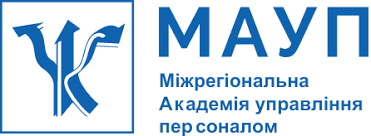BODY-ORIENTED THERAPY AS AN INNOVATIVE MEANS OF RESTORING THE EMOTIONAL AND VOLITIONAL SPHERE OF A PERSON WHO HAS SUFFERED A STROKE
DOI:
https://doi.org/10.32689/maup.psych.2025.1.17Keywords:
body-oriented therapy, psycho-emotional rehabilitation, emotional and volitional sphere, stroke, psychosomatic approach, neuropsychological recovery, rehabilitation practice, traumatic experience, breathing techniques, body awarenessAbstract
The article deals with the topical issue of psycho-emotional rehabilitation of stroke survivors, with an emphasis on the restoration of the emotional and volitional sphere. It is noted that as a result of a stroke, patients often experience not only impaired motor functions, but also significant psycho-emotional changes, including decreased self-esteem, apathy, emotional instability, anxiety, and difficulties in self-regulation. This has a negative impact on the quality of life, complicates social adaptation and slows down the rehabilitation process. The author analyzes the current state of scientific research in the field of body-oriented therapy as a psychotherapeutic method based on a holistic approach to the body and psyche. It is noted that body-oriented therapy involves the use of breathing practices, work with muscle clamps, body awareness, micromovements and grounding techniques with the aim of emotional relief, reducing stress and activating the internal resources of the individual. Based on the analysis of domestic and foreign sources, it has been established that body-oriented therapy has significant potential in restoring the psycho-emotional state of a person after a trauma, in particular after a stroke. Five key areas of its impact are identified: restoration of the body-emotion-consciousness connection, stabilization of the emotional background, development of volitional efforts, formation of a positive body image, as well as flexibility and compatibility with other rehabilitation methods. The article also describes in detail the directions and conditions for the effective use of body-oriented therapy: from the stage of emotional stabilization to the promotion of social adaptation. Particular attention is paid to the conditions that ensure the success of the implementation of body-oriented therapy in rehabilitation programs: individual approach, professional competence of the therapist, gradual application of techniques, emotional safety of the environment and integration with other forms of therapeutic care. Summarizing, the author emphasizes the need for wider scientific and practical implementation of body-oriented therapy in rehabilitation practice in Ukraine, as well as the expediency of further empirical research to develop standards and evidence base for the effectiveness of this approach in neuropsychological rehabilitation.
References
Зиза К. В. Психологічні особливості подолання депресії засобами тілесно-орієнтованої терапії у підлітків: квал. маг. роб. Київ, 2022. 129 с. URL: http://dspace.e-u.edu.ua/items/3fc2d862-eaa5-4ed5-8b1f-623d3e4043ef
Керестей В. В. Комплексна програма фізичної реабілітації осіб з гострим порушенням мозкового кровообігу у пізньому відновлювальному періоді6 дис. … канд наук з фіз. вих. та спорту. Київ, 2019, 239 с.
Козаченко О. В., Гудзенко С. В., Шимчук Т. В. Ефективність застосування методів тілесно-орієнтованої терапії у роботі з військовослужбовцями, які мають прояви хронічної втоми різного ступеня. Український медичний альманах. 2022. No 2. С. 28–31.
Козьолкін О. А., Мєдвєдкова С. О., Ревенько А. В. Реабілітація хворих на мозковий інсульт: навч. посіб. для самостійної роботи лікарів-інтернів за спеціальністю «Неврологія», «Загальна практика – сімейна медицина», лікарів-неврологів, сімейних лікарів. Запоріжжя: ЗДМУ, 2021. 87 с.
Мартинюк І. А. Техніки тілесно-орієнтованої терапії у корекції емоційних станів. Практична психологія та соціальна робота. 2007. № 8. С. 60–63.
Пітер А. Левін. Зцілення від травми. Київ: Видавництво Ростислава Бурлаки, 2022. 156 с.
Садова М. А. Вплив тілесно-орієнтованої терапії на депресивні стани наркозалежних клієнтів. Psychological journal. 2020. Том 6. Вип. 3. С. 113–125
Терлецька Л. Г. Тілесно-орієнтована психологія: навч. посіб. Київ: Главник, 2008. 128 с.
Тимошенко М. П. Тілесно-орієнтована терапія як інноваційний метод роботи психолога. Перспективи та інновації науки. №5 (39). С. 930–939.
Хлівна О. М., Магдисюк Л. І. Психологія тілесності: навч.-метод. посіб. Луцьк: Вежа-Друк. 2022. 192 с.
Хомуленко Т. Б., Крамченкова В. О. Методика проективної діагностики тілесного Я. Науковий вісник Херсонського державного університету. Серія «Психологічні науки». Херсон, 2016. Вип. 5. С. 39–45.
Pat Ogden. The Different Impact of Trauma and Relational Stress on Physiology, Posture, and Movement: Implications for Treatment. European Journal of Trauma Dissociation. 2020. №5 (2). DOI https://doi.org/10.1016/j.ejtd.2020.100172
Pylypenko N., Radchuk H., Shevchenko V., Horetska O., Serdiuk N., Savytska O. The Psychodrama Method of Group Psychotherapy. BRAIN. Broad Research in Artificial Intelligence and Neuroscience. 2023. № 14 (3). РР. 134–149. DOI https://doi.org/10.18662/brain/14.3/466





